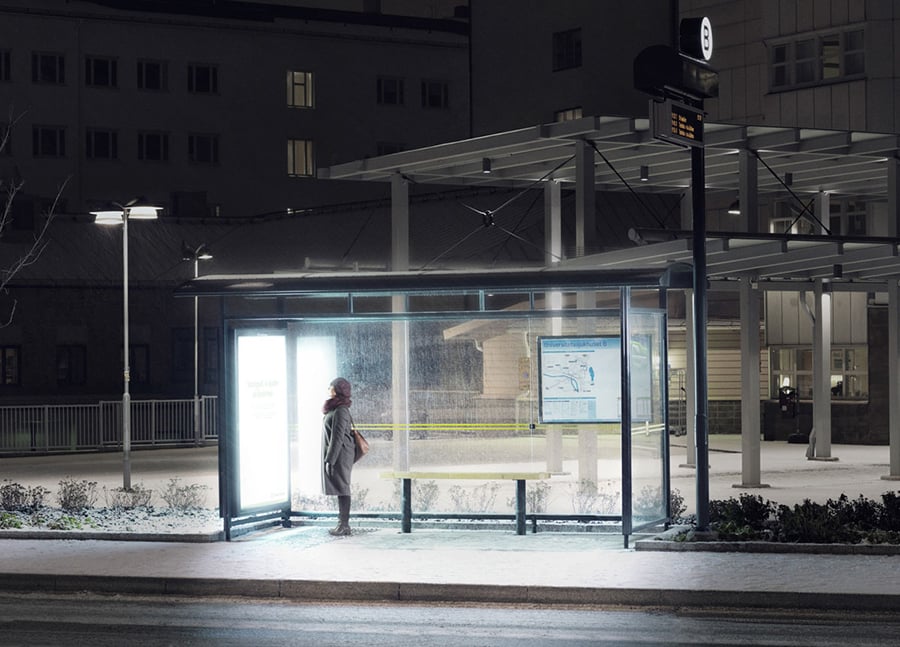
February 6, 2019
OPINION: By Simply Repairing Infrastructure, We’re Missing Huge Opportunities to Make Cities More Resilient and Responsive to Citizens’ Needs
Scott Burnham, author of Reprogramming the City, writes that in our era of limited budgets and resources, increasing the functionality of existing infrastructure is a necessary path forward.

A vast number of bridges in the U.S. offer little satisfaction beyond making it over or under them without a chunk of cement dislodging. Motorists in Geneva felt a different sense of satisfaction when they encountered this bridge-mounted installation in their city. An algae-growing system had been attached to the bridge’s guardrails, cleaning the air of CO2 and producing a fuel- and food-rich substance. The structure still functioned as a bridge but provided additional benefits beyond its original purpose.
There is no reason the future of infrastructure in the U.S. can’t hold the same promise—ordinary infrastructure performing additional and extraordinary functions. The first step is to adopt a reprogramming mindset instead of a repair or replace one.
The new urban reality is one of limited resources, space, and budgets. By continuing to simply scrap or patch old infrastructure and physical assets, cities continue down a path of wasted resources, unsustainable practices, and lost opportunities. Reprogramming provides a chance to meet increasing urban needs in resourceful, sustainable ways by maximizing the use of the city’s existing assets.
Repairing infrastructure is the still primary goal for most cities and agencies, but a short-sighted one. Designating something for repair opens a window of opportunity. Budgets are allocated, crews are assigned, and logistics are planned for the work. This is where so much more can happen: instead of repairing a bridge or any piece of infrastructure to maintain its original function, cities should repair and reprogram it to perform additional functions.
For example, across the U.S., city water infrastructure systems are in desperate need of upgrades to simply remain adequate. Rather than striving for adequate functionality, engineers should learn from Portland, Oregon, and double the functionality of water systems to also be producers of energy.
Lucid Pipe is a system from Portland-based Lucid Energy that harnesses the motion of water flowing through municipal water pipes and converts it into energy. Using the same principles as hydroelectric dams, the movement of the water spins turbines embedded in the pipes to generate energy for homes or other infrastructure systems.

Transportation infrastructure—like the bridge in Geneva—is another huge opportunity. For instance, the city of Umeå, Sweden (located 300 kilometers north of Stockholm) receives just minutes of natural daylight each day during winter. Such lack of natural light has a significant impact on the mental health of the city’s residents. So, local energy company Umeå Energi realized that a solution to the city’s seasonal depression was possible by reimagining the function of its bus stops.
Using the advertising apparatus already in place in the bus stops, the company replaced the lights used to back-light advertising with anti-SADD “light therapy” bulbs. As commuters wait for the bus, they can face the natural light frequency bulbs to get a dose of mood-boosting light before continuing their journey. After 30 of the city’s bus stops were transformed into light therapy booths, bus ridership in the city increased by 50 percent during winter months.

A city’s rolling stock infrastructure holds equal potential. In San Francisco, the Lava Mae organization converted decommissioned city busses to become “mobile hygiene units,” providing local homeless people with showers and sanitation services. Instead of rusting away in a junkyard, a fleet of old city buses now “deliver hygiene and rekindle dignity” to thousands of individuals throughout the city.
To create any one of these projects or dozens of others from scratch would require robust budgets, staffing, and resources. Applying a reprogramming mindset to the assets that already exist in the city allows new functions and services to be offered with minimal outlay. With a seemingly infinite roster of infrastructure in need of repair in the U.S., there is immense opportunity to weave a reprogramming mentality into the process to catapult the country’s infrastructure from adequate functionality to a provider of extraordinary services.
By exchanging preconceived notions of what something is in the city with the reprogramming mindset of what something could be, limitations disappear, and the existing urban landscape is transformed into a limitless platform of possibility.
Urban strategist Scott Burnham is the author of Reprogramming the City.
You may also enjoy “Sustainability Glossary: 6 Terms You Should Know.”





